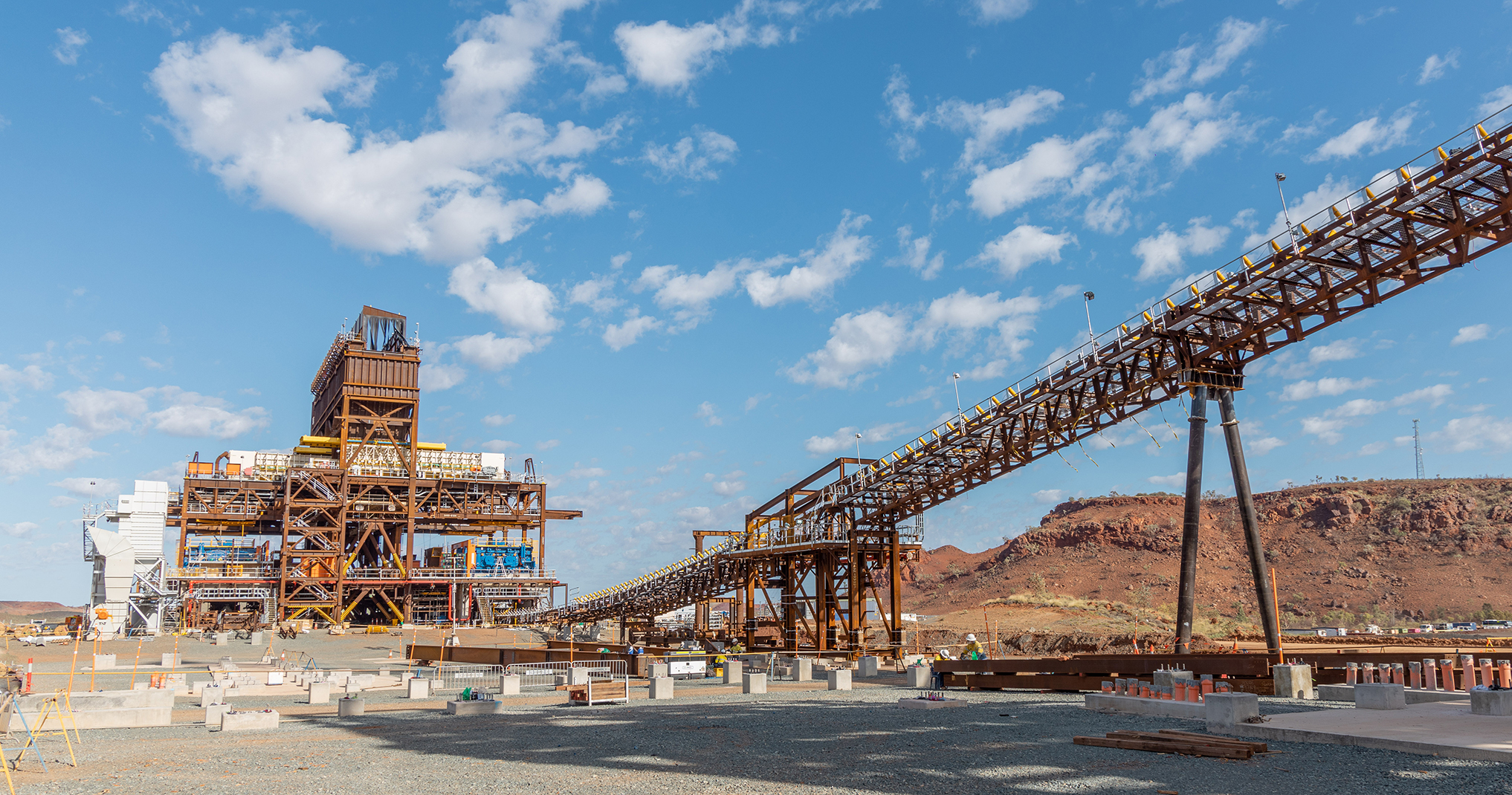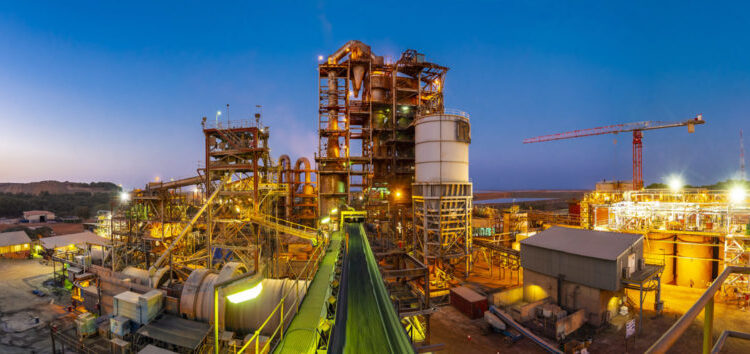South Kazakhstan boasts one of the biggest phosphate deposits in the world. General director Mukash Iskandirov explains to Gay Sutton how the phosphate mining and manufacturing company Kazphosphate is introducing the latest technology to take advantage of the growing market for high quality phosphate products.
In recent years, Kazakhstan has been recognised as having some of the world’s largest deposits of natural resources. Its phosphate deposits, discovered around 70 years ago in the Karatau basin to the south of the country, have been mined since 1946 and are among the biggest in the world. In 1999 Kazphosphate, which operates all the phosphate mining, processing and manufacturing interests of the region, became a limited liability company, and began looking at ways of modernising and diversifying.
Completely owned by local investors, the business includes six mines, of which two are underground and four are open pit, a range of processing and chemical manufacturing facilities in various locations and a privately owned railway network interconnecting them and linking with the national network.
Kazphosphate is in the enviable position of having an extensive phosphate resource that is scalable for the future. “We have a total resource of 1.8 billion tons of phosphate ore at our current mines,” says general director Mukash Iskandirov. This works out to give an estimated mine life of many years and means that unlike most mining companies there is a guaranteed availability of ore and no need to continuously invest in exploration. Moreover, the company is currently only exploiting a small part of the resources available in the region. “Nobody knows how much ore there is in the entire Karatau deposit,” he continues, “but it is believed there could be as much as 45 billion tonnes in total, so we are operating on just a small part of that. Estimated reserves are 23 billion tons.”
The mines are located close to Karatau and Zhanatas, two cities that have grown up almost exclusively around the industry. The ore is crushed and sorted and put through the beneficiation process at the Chulaktau processing complex at Karatau, and the Karatau processing complex at Zhanatas. Some percentage of mined phosphate is exported to Russia, Ukraine, Uzbekistan and Turkmenistan, but the vast majority is then transported to a range of Kazphosphate manufacturing facilities near Taraz some 200 kilometres away. These include elemental technical phosphorus and its derivatives and mineral fertiliser plants in Taraz, a detergent plant in Shymkent and chemical plant producing MAP in Stepnogorsk.
Interestingly, Kazphosphate used to be the old USSR’s supplier of fertilisers for local market and exports. Today, the company continues to export the product into the CIS countries as well as the European Union (EU) and China. Meanwhile, the main market for technical phosphates, particularly yellow phosphate, is almost exclusively the EU.
The vision behind the programme of expansion and modernisation across the company is to build a high-tech industry producing an increasing diversity of quality phosphor products for export to Europe and the surrounding countries.
Exporting to Europe and China, however, presents some interesting challenges, ones that Kazphosphate has been working to resolve. The very location of Kazakhstan, in the centre of the Eurasian landmass, makes long-distance logistics very difficult. “In the fertiliser industry, large producers usually operate their own port terminals from where they can export around the world,” Iskandirov explains. “Our nearest port is around 4,000 kilometres away, so our export capability is limited to locations we can reach by railway.”
Railways, therefore, form the backbone of the company’s operations, and as long ago as 1973 it constructed its own private railway network. Totalling some 250 kilometres of track, the railway links the mines with each of the processing and manufacturing plants and also with the national and international rail network. This private line stretches from Zhanatas in the north to Taraz in the south and west to Shymkent. The company owns and maintains a fleet of 30 locomotives along with over 930 specialist wagons for products as diverse as yellow phosphorus, sulphuric acid, phosphoric acid, rock phosphate, ammonia, soda ash and liquid pitch.
Several significant modernisation projects have already been completed, and are delivering a variety of quality improvements, cost savings and environmental benefits. One such is the introduction of a process to reduce waste at the elemental phosphorus plant in Taraz. The sludge produced in the yellow phosphorus manufacturing process retains high phosphorus content. The upgrades enable the plant to recycle the sludge repeatedly to extract the phosphorus, cutting sludge output to zero.
An upgrade completed at the purified phosphoric acid plant last year has more than doubled the output of acid and sodium tripolyphosphate, and improved the acid to food quality, opening new markets in the EU where the product is in great demand.
The EU is a lucrative target marketplace for Kazphosphate, easily reached by rail, and demanding increasing volumes of yellow phosphorus. “Many of our clients in the EU are asking for a higher quality product with a lower content of organic residues,” Iskandirov says. “To tap into this market we have upgraded and modernised our yellow phosphorus plant, a project that was completed last year.” The output capacity of the plant continues to be 120,000 tons per annum, but 7,000 tons of that can now be purified to a higher grade. “And we have buyers for all that higher grade product, so we are in effect already sold out for this year.”
There is a continuing pipeline of improvements underway and in the planning stage. The largest is an $80 million sulphuric acid plant being built adjacent to the fertiliser plant in Taraz, and due to come online in the fourth quarter of this year. Utilising the latest technology, the plant will deliver significant cost savings, not only by reducing the need to purchase sulphuric acid on the market but also by harnessing the heat generated in the production of sulphuric acid and using it in the plant, cutting energy consumption and reducing the impact on the environment.
The second major project currently underway will have impressive long term environmental and cost cutting benefits. Gases produced during the production of P4 elemental phosphorus were previously burned and vented into the atmosphere, but new technologies are being introduced to recycle the gas to fuel the process. “So far we have completed two furnaces, and will be finishing all four by next year,” Iskandirov says. The projected cost for the project is $16 million, but the return on investment will be surprisingly rapid. “This will save us approximately $10.5 million per annum by reducing our natural gas requirement by 37 million cubic metres a year. It’s a great economy on natural resources, and will have a significant impact on the environment.”
Another project slated for the future is to recycle dust, a waste product of yellow phosphorus production, so it can be used in the fertiliser plant. “This is a very new project and we’re doing the feasibility study on it right now,” Iskandirov says. “But the dust contains significant amounts of potassium, and we plan to use it to produce NPK fertilisers.”
The most important and also the most ambitious project on the horizon is the construction of a new $170 million high-tech beneficiation plant near the mines in Karatau. Comprising both suspension and flotation processes, it will produce a much higher grade output. “This is our most expensive project to date and will produce 3.5 million tonnes of new product with a higher P2O5content which we can then export or use to produce fertilisers, MAP and so on.” Still in the planning stage, the project is likely to enter the construction phase in 2015.
Kazphosphate, which employs some 5,800 people across the business, is investing significantly to establish itself as a high-tech organisation, supplying quality phosphor products to Europe, the CIS countries and China. The benefits to the regional economy around Taraz, Karatau and Zhanatas are significant, and look set to grow.
DOWNLOAD
 Kazphosphate-EMEA-Apr12-Bro-s.pdf
Kazphosphate-EMEA-Apr12-Bro-s.pdf













